I
t was Valentine’s Day 2016 in Northfield, Minn., and for Fang, it was love at first sight.
The heart-shaped Mylar balloon was red with a white heart pattern, tied with a pink ribbon. Abigail Henderson’s husband had picked it up on a whim as a silly gift for her. Right away, the couple realized that the balloon held a fascination for Fang, their shy, diminutive black cat. “We were always finding Fang under the balloon. He was just hanging out with it. We thought, ‘Is this a coincidence?’” says Henderson, class of ’03. But when the balloon began to drift around the house and the little black cat followed it like a shadow, they knew it was more than a passing fancy.
Enchanted by the unlikely courtship, Henderson took a picture of Fang under the balloon and posted it to a Facebook group that she knew would appreciate it, Wellesley Wags and Whiskers.
“I would like to share the tender romance budding between Fang and this slowly deflating Valentine’s Day balloon,” Henderson wrote. “Fang stares at the balloon. It stares back. When it drifts slowly across the room, he follows along, occasionally reaching out his paw to gently touch the ribbon’s frayed end. Or he sort of chews it.”
Wellesley alums all over the world fell in love. Over the next few months, Henderson and her husband bought more balloons for Fang (their other two cats and turtle ignored them)—a St. Patrick’s Day balloon, a “World’s Best Grandpa” balloon, a hedgehog balloon—and Henderson provided updates to Wags and Whiskers. Soon, alumnae began sending Fang uninflated balloons as gifts, and Henderson would get them filled at the dollar store.
“It’s taken on a life of its own. People will say, ‘Oh, you should get him on Instagram,’ but I kind of like keeping it just within the Wellesley world. It’s really sweet, his little Wellesley following,” Henderson says.
In fact, it’s not such a little following—Wags and Whiskers has more than 3,000 members around the globe. Animal-loving Wellesley alumnae ask pet-related questions, find support when a beloved companion passes away, and, of course, post photos. (“Tongue-out Tuesday” is a particular favorite.) It makes sense that pets are such a popular topic. According to the American Veterinary Medical Association, 36.5 percent of households in the United States have at least one dog; 30.4 percent have at least one cat.
The Wags and Whiskers group provides a window into the personal lives of alumnae, their pets, and the mysterious and life-affirming bond that can exist between humans and animals. Henderson, who is a pastor at the First United Church of Christ in Northfield, says that after a difficult day at work, she relies on her relationship with her cats. “It’s very comforting,” she says. “I’m actually very introverted, but I don’t have an introverted persona at work. … I really, really appreciate the reminder that animals give that talking isn’t required for a deep relationship, that you can have a profound emotional exchange without words.”
Scrolling through Wags and Whiskers, it is apparent that there are many lessons animals can teach us, if we are receptive to them. Wellesley magazine spoke with the humans behind some of the most familiar muzzles (and one beak) from the group about what they’ve learned from their pets and what they’ve gained from Wellesley connections on Wags and Whiskers. As Henderson puts it, “There’s this level of intimacy to [the group] that’s really special. I have a ritual at the end of the day of checking through Wags and Whiskers, like, ‘OK, how’s everybody doing?’”
Constant Comedy
After three years in Western Massachusetts pursuing an M.F.A. in fiction writing at UMass, Amherst, Zoe Mungin ’11 couldn’t wait to “come back to civilization”—her family’s home in Brooklyn, N.Y. Mungin’s family has owned the two-family row house since the 1960s, and multiple generations have lived there.
“I grew up with cousins and uncles, and now it’s mostly my mother and her kids” … and their pets, says Mungin, who is one of the Wags and Whiskers moderators. “My mother and her siblings, people called them the ASPCA, because she and her five brothers and sisters all had their own dogs,” she explains. So when Mungin moved home, she decided it was time to get a dog herself. “I wanted my own dog that I could mess up on my own,” Mungin says. Her brother’s friend had a mother dog that wasn’t nursing her puppies, and Mungin thought she might foster one. But after some convincing from her brother, they took in two 3-week-old pit bull puppies, Rosie and Bandit, who quickly became a permanent part of the household.
What do the dogs bring to their lives? “Constant comedy,” says Mungin, and many members of Wags and Whiskers would agree. This is a typical exchange between Mungin and her mother, which Mungin recounted for the group:
Mama: I suggest you start closing your window when you leave in the morning.
Me: Why?
Mama: Because every time you go, Bandit tries to follow you. One of these days, he’s actually gonna jump out. So either you close the window, or you buy your dumb-ass dog a cape and hope it slows him up on the way down.
Although Mungin’s mother makes a show of being tough on the dogs, she cares about them deeply and has her own special bond with them. “I came home one night, and she and Bandit were watching Marley & Me,” says Mungin.
“One of the biggest things I’ve learned is that they will tell me what they need, but I control the environment. I set the weather,” says Mungin. Also, she’s learned not to stress too much about being the perfect pet owner. “That was a really big one for me, to stop worrying about how I was constantly failing as a dog owner and just enjoy actually being one. I’m trying to do that now … when Bandit’s not puking,” she says. (Bandit enjoys eating the inedible.)
Mungin teaches English and social studies at a middle school in Bushwick just a mile from her home. “[My students] are really into how into my dogs I am. They think I’m goofy, but I don’t care. But it feels good to be like, I’m a person from here who went away to college and ‘made it,’ so to speak, and I still live here, and I still have the kind of dog that people say you shouldn’t have. But they’re great dogs.” And, Mungin adds, the dogs “add depth in a world that I think needs it, and, I think, a flash of reality. You know, the seasons are changing. The dogs need to go out. Time is passing. We’re still here, still going strong. We’re going to make it.”
Comfort and Crisis
For Fran Phillips Decker ’80, the reality check that pets provide was critical in the months after her husband died. Their cats had always held a special place in their lives: The couple got their first cat, Olive Oyl, while they were taking long-term trips on their sailboat. “From 1985 to 1988, her little feet never touched land until we came to the Florida Keys and settled down,” Decker says.
During her husband’s final illness, they had two sister cats, Mango and Cocoa. “They thought it was awesome that he was lying on the sofa all day, every day. He had two cats glued to him all day, and it was a very happy thing,” Decker says.
And after he died, the cats helped her move through life as she grieved. “Sometimes I would just be sitting on that same sofa, just sort of paralyzed,” she says. “You don’t know what to do. Should I get up? Should I eat? Should I just sit here in total misery? And Mango particularly would come and lie next to me, and then every five to 10 minutes, she would just put her little paw on my arm. And she’d look up into my eyes, just kind of to say, ‘Are you OK?’ That just touched me so much.”
Last September, as Cocoa was reaching the end of her life, Decker was forced to make a difficult decision as Hurricane Irma barreled toward Key West. Evacuate with a sick cat requiring subcutaneous fluid twice daily, plus two other cats (including her sister’s), or face a Category 4 hurricane? “I chose to stay for the hurricane rather than evacuate, which was a very controversial decision, because yes, this was a huge hurricane,” says Decker. “My decision to stay was because I thought Cocoa wouldn’t survive the evacuation process. Picture this: Me and three cats in a tiny Mazda Miata along with IV bags, this and that, and there were gas shortages and traffic jams. I had this vision of being stranded on the side of the road with a sick cat and two other cats. And I thought, I can’t do this. I just can’t do this. I have to stay.”
In the end, it worked out—Decker’s house was unscathed, and she wound up taking in some friends and their pets who had lost their homes. “At one point, I had eight adults and five cats and three dogs all living in my house,” she says. “So it was a little bit crazy.” But anything to help a friend—with or without fur.
Compassionate Care
As a veterinarian, Yuki Nakayama ’08 is a frequent voice of reassurance and advice on Wags and Whiskers. “The biggest thing I’ve learned as a vet is, it’s not so much about animals…. My job is more about the owners and their expectations. … My biggest thing is to find out what exactly the owner wants and needs for their pet. They know their pet the best, and there’s no one way to treat something or deal with something,” she says.
While working with animals is a lifelong dream come true for Nakayama, it can be quite difficult. One Saturday, when she was working at an animal hospital in Western Massachusetts, she and her coworker had euthanized nine animals in five hours. The last appointment for the day came in, and it was for a second opinion on a cat that had a giant mass on his chest, but it was entered into the system as a euthanasia. “It was like, ‘Oh, God, not another one,’” she remembers. The owner was reluctant to euthanize the cat, and after such a difficult day, she was, too. They decided that they would wait until Monday, when Nakayama would attempt to remove the mass, with the understanding that it was very risky.
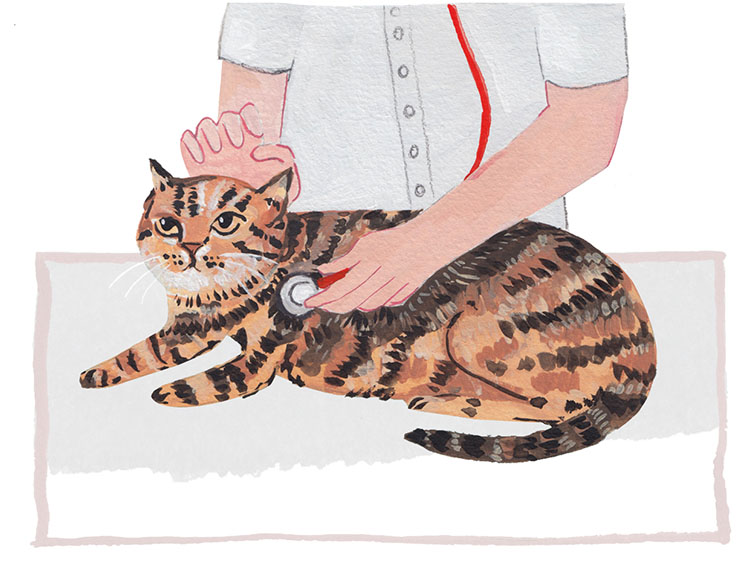
Amazingly, the surgery was successful. “My goodness, that kitty was like Frankencat. That incision went pretty much all the way around that cat, but we closed it, and it healed, and the cat lived. … After that horrible Saturday, it was a win for everyone. Those are the ones that really stand out,” she says.
Another part of her life as a vet that’s been particularly meaningful is the volunteer work she does once a week at Tufts at Tech, a teaching facility run by veterinary students at Tufts’ Cummings School and students at Worcester Technical High School. The clinic is for pet owners who prequalify for low-cost pet care. “It really helps out people who really cannot afford veterinary care otherwise,” Nakayama says.
As for her work life, Nakayama was thrilled recently to help open a clinic that aims to provide quality care at a reasonable price, with another Wellesley vet by her side—Megan Andreassi ’09.
A Revolving Door Of Kittens
Tamara Hendrickson ’90 also finds great meaning—and fodder for extremely popular posts on Wags and Whiskers—through volunteer work with animals. Several years ago, a stray dog in Detroit led her, quite literally, to Grosse Pointe Animal Adoption Society, the nearest shelter. After she caught the dog—there are tens of thousands of strays in Detroit—the society loaned her a leash and a bowl for water. Later, when she went to return the leash and bowl, they told her to keep them. “‘You’re one of those people,’ they said, meaning that having a leash in my car is in my best interest, and the best interest [of the dogs of Detroit]. And it turns out I’ve probably rescued five or six dogs in the past 10 years here,” she says.
Some time after rescuing that stray, Hendrickson approached the shelter about fostering mother cats with kittens. “I was thinking a mom and kittens might work, because the kittens will get adopted,” she says. Now, several years later, she’s fostered 38 cats, many of whom she caught herself as they were being born.
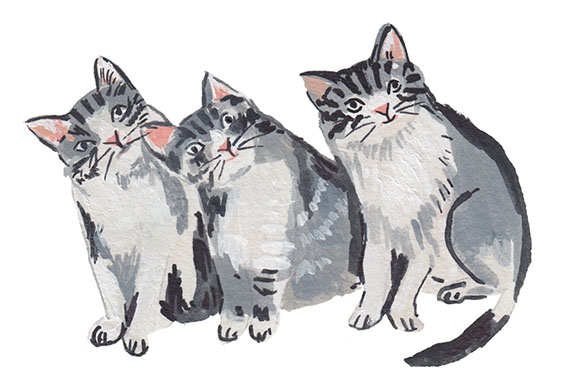
Hendrickson, a chemistry professor at Wayne State University, has had a demanding few years professionally, and the cats and kittens have provided an invaluable counterbalance to her work life. “It hasn’t been an easy road [at work], and it’s hard to be sad when you have kittens pouncing around your basement,” she says.
Several alumnae from Wags and Whiskers have adopted her foster kittens, which is especially meaningful for her. When she first started, she was afraid she wouldn’t be able to part with the kittens. “But I actually find the kittens easier to give up, because you see them being taken, so often by families with kids, and you just see this warm life that they’re going to have forever in front of them. So I’m just like, OK, bye-bye, have a good life, love you, call me if you need anything,” Hendrickson says. “And then the next litter is in days later. It’s like a revolving door of kittens.”
Turtle Power
There are more than just cats and dogs on Wags and Whiskers, of course. E.B. Bartels ’10 is the proud owner of Terrence the red-footed tortoise. She is a self-confessed “turtle lady” who often sports turtle-themed jewelry and once attended the New England Reptile Expo. Bartels, who has an M.F.A. in creative nonfiction from Columbia, is currently writing a book about how people grieve the loss of their companion animals.
“A professor of mine at Columbia said that every writer has a theme, and if you look close enough at their work, every single book, essay, even if they’re supposedly about different things, it’s the same,” Bartels says. For her, that theme is dead pets. “Something I’ve been writing about is whether I like tortoises because I’ve put off pet death as long as I have to. … Terrence is going to live for 20 to 50 years.”
Terrence’s aquarium is in Bartels’ office in her apartment in Cambridge, Mass., and she says that his quiet presence as she writes is a calming one. “I really like having a tortoise, personally, because I’m a very anxious, sort of frantic person by nature, and I feel like having a tortoise who’s very methodical and slow, and takes it one thing at a time, is a nice reminder to me to, OK, take a deep breath,” she says.
Also, there’s the charming way he attacks his favorite food, strawberries, in intense slow motion. “Watching him eat is my favorite thing. It’s so funny,” Bartels says. But it can take quite a while. “I think maybe another reason why someone should get a reptile as a pet is to help practice patience,” she says.
As Bartels does research for her book—visiting animal graveyards, interviewing tattoo artists who specialize in pet art, and exploring the expansive world of animal memorial crafts on Etsy—her focus has become the ways that pet owners search for a community of like-minded people when they lose a companion. “Often, people belittle the relationships that people have with animals, and say, ‘Oh, it’s just a cat, what’s your problem?’ But if you had a cat for 20 years and saw that cat every day. … People have really intimate relationships with animals. You share your bed with them, you snuggle with them, you can be silly and goofy with them in a way that you often aren’t with other people,” Bartels says.
For many Wellesley alumnae, Wags and Whiskers is that supportive, encouraging community of like-minded people. People who will understand why you have a flotilla of Mylar balloons in your living room for your cat. “One time, we had five or six—it was nuts. It was the summer, so when our windows were open, our neighbors must have thought we were having a party for days and days,” Abigail Henderson says, laughing. On Wellesley Wags and Whiskers, the party never stops.
Lisa Scanlon Mogolov ’99 is a senior associate editor of Wellesley magazine. She wrote a good portion of this story with her cat, Maddie, supervising. She frequently tweets about her cat (and about Wellesley!) as @lscantron.





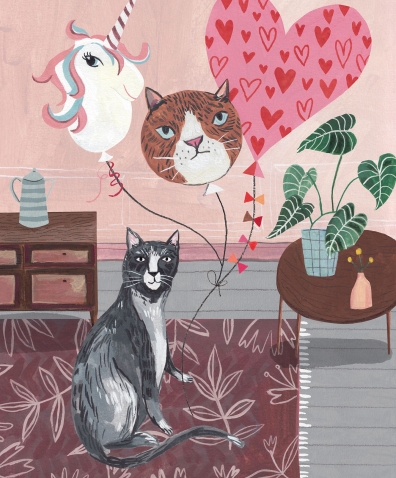


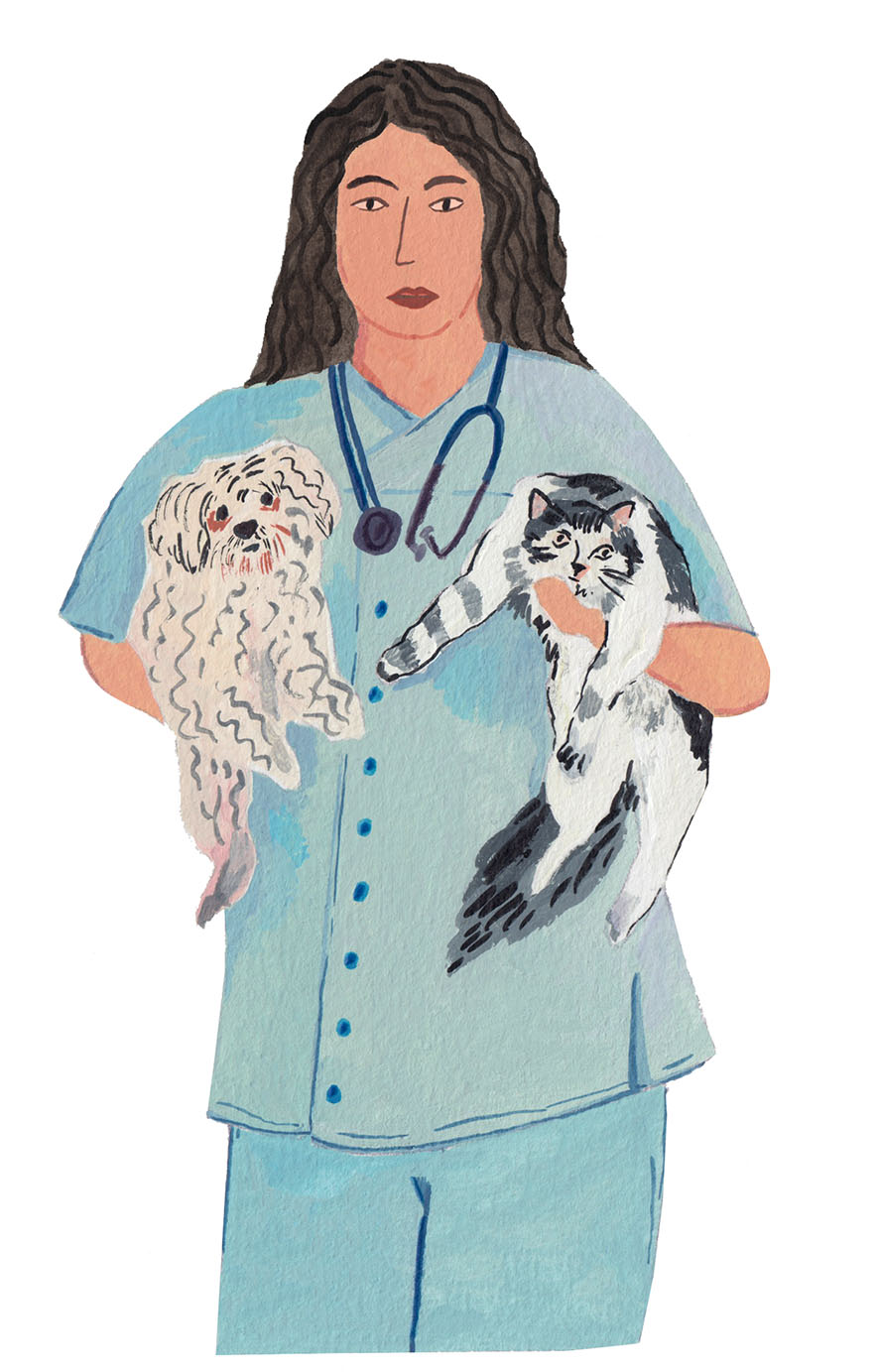
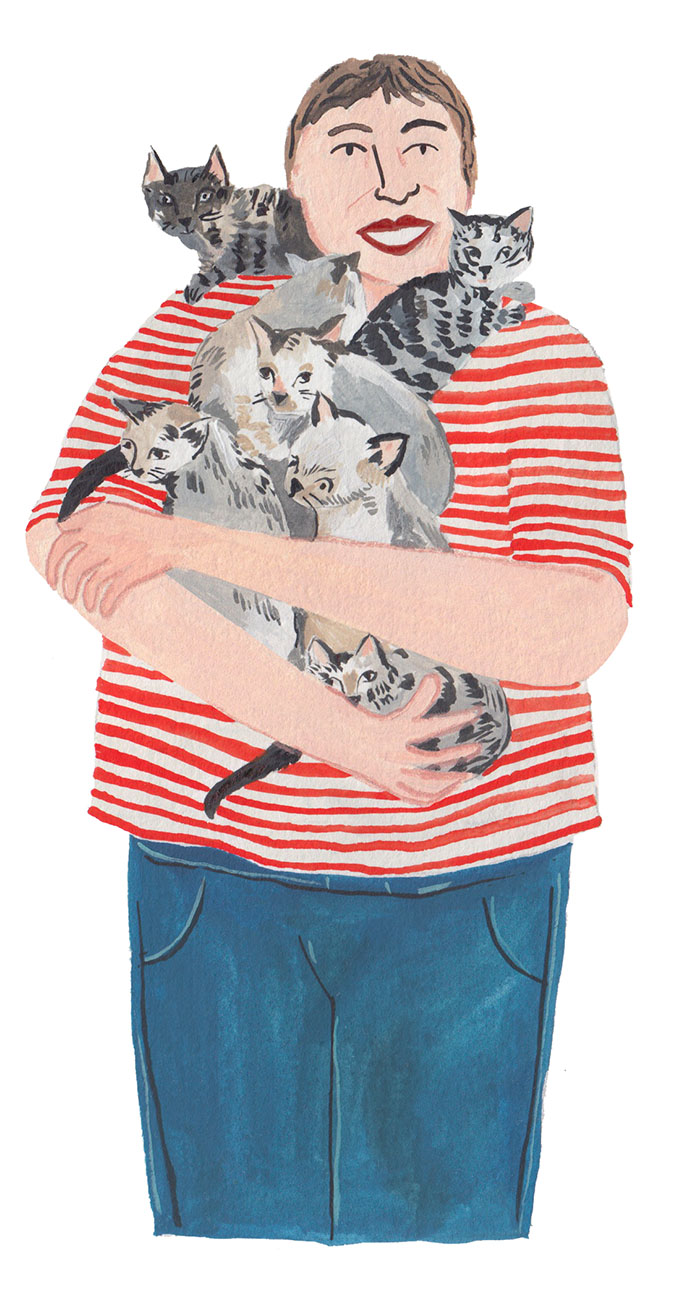




We ask that those who engage in Wellesley magazine's online community act with honesty, integrity, and respect. (Remember the honor code, alums?) We reserve the right to remove comments by impersonators or comments that are not civil and relevant to the subject at hand. By posting here, you are permitting Wellesley magazine to edit and republish your comment in all media. Please remember that all posts are public.